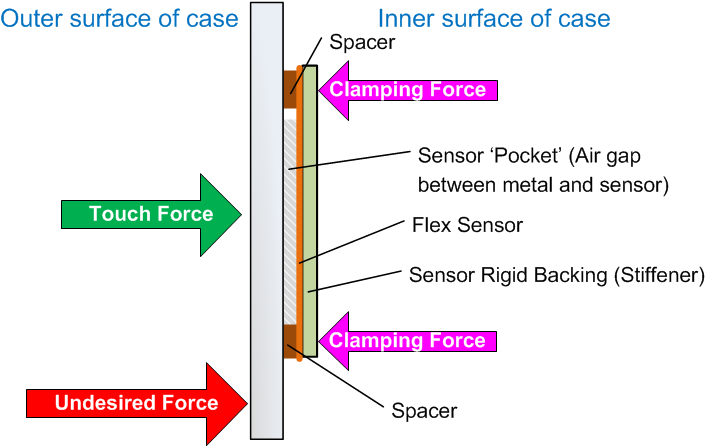SNOA961A February 2017 – February 2023 LDC2112 , LDC2114 , LDC3114 , LDC3114-Q1
- Inductive Touch System Design Guide for HMI Button Applications
- 1Mechanical Design
- 2Sensor Design
- 3Summary
- 4Revision History
1.2 Button Construction
Using the principle discussed above, we can construct a metal plate and sensor combination which can function as a button. As the sensitivity of the sensor increases with closer targets, the conductive plate should be placed quite close to the sensor—typically 10% of the sensor diameter. At this close distance, the LDC can reliably measure a 0.2-µm deflection. For small deflections, the amount of deflection is roughly proportional to the applied force.
For a robust interface, it is necessary to control the distance between the sensor and the target so that random movements are not interpreted as button presses. #T4726003-4 shows how sensors can be clamped onto the inside surface so that only touch forces cause a deflection toward the sensor and any other forces do not produce an effective deflection toward the sensor.
 Figure 1-2 Button Construction With Metal Target and PCB Sensor
Figure 1-2 Button Construction With Metal Target and PCB SensorIf the sensor is constructed of a rigid PCB material such as FR4, then the rigid backing is not necessary.